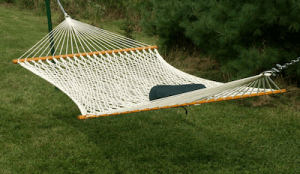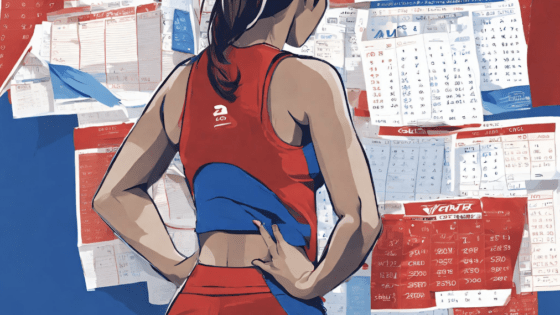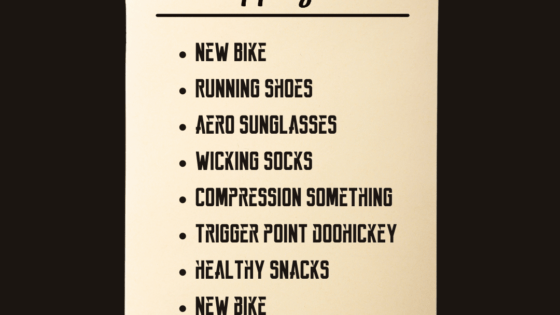This article is part of a new beginner’s series. Click here to find more articles from this series.
Welcome to the next section of the Beginner Ironman article series. In this section I am going to walk you through some basic lifestyle guidance. My goal here is to help you make the most of your training through better organization and tactics.
Beginner triathletes often complain how time-consuming triathlon training is. But it’s not just the training.
The research and organization required to create a quality training and racing experience is enormous. The hardest part of your preparation is creating the schedule that will allow you to be your best. Use our lifestyle tips to save time and avoid common mistakes. Reduce your mental “load” so you can get right down to the work that matters.

Finding Local Workouts
Finding accessible options for your training is a top priority. There is nothing worse than having to drive a great distance or time to workout.
If it takes you longer to get to and from your workout than it does to do your work out, then you have a problem.
The option that you are most likely stressing about is the swim. You hopefully have a swimming pool or open water space near you that you can take advantage of. Of course, you will have issues in juggling that facility schedule versus your own.
Most pools offer adult lap swimming either early in the morning or late at night. Typically neither one of them is good for you. Whatever the schedule, know it and save it to your phone and/or calendar.
As your coach, we are most concerned about your bike training. The best way to address this is to find a local cycling group or club. Riding with others as a beginner will be a million times better than someone who is on their own.
Let’s not forget that going out for a ride in an area you don’t know is a huge undertaking. You need to manage directions. You’re looking for stores. You don’t know what the road quality will be like. You don’t know where the traffic will be dangerous.
Riding with a group of eliminates a great deal of that “noise” so you can focus on pedaling your bike. As you become more experienced and comfortable with your cycling abilities, you can begin the process of moving beyond your comfort zone.
Running with a local group makes running more fun. Camaraderie and social support are two key elements that Endurance Nation athletes frequently highlight. Creating that same experience with your run workouts will motivate you to get out there daily. You are more likely to do the work that’s required for you to be successful on race day.
Most athletes seem to struggle with run motivation as few of us are “natural” runners. Running with a group allow you to find some neat local roots as well as keep you going when the going gets tough.
Power User Tip: If you don’t have specific group options in your area, take advantage of the Internet to find places to ride and run. Sites such as Strava (www.strava.com) will allow you to find where other people near you run and bike. You can piggyback on their workouts by viewing their maps. This is also great for athletes who travel often and are constantly training in new places.

Open Water Swim Anyone?
Define a Workout Window
Don’t stop to think about the sheer amount of work you’re going to need to do to get ready for race day. Instead, block out a set window for training every day.
At a minimum you’re going to need to train 10 hours a week. That can easily become 16 hours for the bigger periods, perhaps more. There is no human way to get to that volume of training in without exercising every day.
The Morning
You should set a morning training window into your daily schedule. No one can interfere with your morning. There are no meetings. There are no interruptions, no emails in the morning. You just get up and get your workout on.
We recommend you get all the equipment (indoor bike trainer, sneakers, headlamp, etc.) so you can do this training without needing daylight. Bonus if can get everything organized the night to eliminate any excuses. You might also want to buy a great alarm clock so you definitely get out of bed to get the work done.
Lunch Time
Once you get to lunch things get a lot harder. Some people have the opportunity to exercise during the lunch break. Many do not. Whether you do or you don’t doesn’t mean that you will have a shower to clean yourself up in afterwards.
We don’t recommend that people force the issue of working out at lunch. Yet if it is an option for you we recommend that you take advantage of it. Remember workout motivation is statistically low at the end of the workday for training — so plan ahead.
If you do need to work out after work, that’s just the way that it is. Plan your nutrition and schedule accordingly so you can get the right workout done without running on empty.
Whenever possible do your best to combine your workouts. If you have a bike and a run on the same day, we prefer you get them done back to back so you only have to take one shower.
Even if that means you need to reduce the duration of either workout that’s okay. I’ll take a 45 minute run now versus an hour run later that might get derailed because of work.

Basic Food Tips
There are two types of food for triathletes. And no, I’m not saying beer and everything else!
Your workout food…will take over a larger part of your life as training increases. Your workout food is critical. It’s what you use to fuel yourself, not only in training, but on race day as well.
Practicing that nutrition daily is what will set the tone for a successful race. It is expensive, so do yourself a favor and find out what will be on the course and then order it. Set the tone with your workout food and you will, by default, improve the other food areas of your life.
Most beginner triathletes under fuel during their workouts and finish hungry. They compensate for the situation by over fueling after their workouts.
Positioning food as a reward for completed workouts is not how you improve body composition. Never forget that every pound is worth two seconds on an Ironman run. If you can lose 20 pounds between now and race day, that will make you 40 seconds faster per mile. 40 seconds faster per mile across 26 miles is a ton of time.
New YOU will finish several miles ahead of old YOU.
Your basic food…is a complement to your workout food. We recommend that you follow the guidance of our good friends at the Core Diet (www.thecorediet.com). Their guidance is simple: create a basic food plan that addresses your daily caloric needs as defined by your lean body mass.
Any extra calories you need from exercise is matched by an increasing amount of work out food. In other words, you do not increase the basic food in your day.
This is a fantastic way of thinking about your food. You have the opportunity to create a simple template for food. Now shopping and cooking are infinitely easier.
It also allows you to make excellent decisions about your food. If you finish your bike ride hungry, you didn’t eat enough when training. If you finish the run and stuff an entire pizza down your throat…you didn’t eat enough when training. Be sure to check out Core Diet (www.thecorediet.com) online for more resources. Members of Endurance Nation enjoy a significant discount and support from their excellent staff.

Sleep Tips
If you’re going to make a habit of getting up early to train, then you will need to make a habit of going to bed early.
While I do not watch a lot of television, it’s clear to me that many others do. I can’t tell you how many times I’ve been part of a conversation where I thought everyone was talking about real people, only to find out it was just someone from television. Anyway, my point here is simple: you need to get to bed on time so you are rested and ready for your morning workout.
Studies have shown that getting less than six hours of sleep a night has a negative impact on your ability to perform basic functions. You can do better without food then you can do without sleep.
Your target is to get an average of seven hours of sleep a night. While some folks say there is no way to “make up” lost some sleep time, I say it’s the lesser of two evils.
Schedule your defined “turn technology off” time and have a sleep ritual that helps you to fall asleep. If you haven’t already, I recommend getting the television out of your bedroom. Also make sure you don’t bring any phone or tablet in there with you. Repeat after me — the bedroom is not technology.
In addition to setting a sleep window, you can also make sleep something you look forward to doing. If you don’t already, consider an outstanding pillow or a great mattress.
One of the best purchases we made when our kids were younger was a white noise maker. The output sounds a little bit what it’s like to be on a plane. Howeber, the noise drowns out the subtle background stuff that can drive you crazy when you’re trying to go to sleep. Whatever it takes for you, do that so you look forward to getting into bed and fall asleep quickly.

Defining a Rest Day
Having a rest day as a part of your week is quite possibly the most important day of your week.
While most athletes obsess about training more to get faster, it’s important to note that rest is what enables your body to consolidate the work you’ve done. During this downtime you create the pathways, the capillaries, and the muscle tissue that make you stronger. While the training plan you choose may not have a rest day already built-in, I suggest you make one work. A rest day is important for many reasons.
Number One – you can sleep in on arrest day. Not having an alarm for at least one day week is like having Christmas every week — or whatever awesome day you celebrate! Give yourself a gift every week.
Number Two it’s an opportunity for you to totally unplug from your training. No powders. No bars. No tire pumps. No shoelaces to tie. No recovery drinks to make. Just wake up lay around do stuff at the house and enjoy your time.
Number Three a rest day opens up your day for other people! This is quite possibly the most important. Many different people who have enjoyed having you in their life so far actually miss you. A rest day allows you the flexibility to still connect with these people despite the ambitious athletic goals you set for yourself.
A rest day is also important because it gives you some wiggle room. A rest day of the end of the week gives you an opportunity where you can “make up” any session you missed during the week.
Daily Preparation Tips
Plot your calendar and see what you have going on tomorrow. This will allow you to allot time for your workouts and for recovery. After all, no job – no triathlon! You can also use that time and night to set out all the nutrition, gear and equipment you need to get your workout done.
If you do things right, you get out of bed and put on your workout clothes. You come downstairs to a fresh pot of coffee. Your bottles, computers and equipment all set out. All you have to do is put them on and start training. Increase the chances that you will do that work of training by reducing extra steps in the morning. Take the time to do this right so you can set yourself up for success.
Weekly Tasks
When you get into the throes of your training it’s very easy to find out that something is wrong. You have a flat tire on your bike. There’s a hole in your shoes. All your swim caps are torn or missing.
This is most likely due to the natural wear and tear that we put on all of our training equipment. A good schedule for weekly and monthly maintenance eliminates most such problems.
Bike Check Up
Your most important piece of equipment is your bike, it’s also the most expensive. Do yourself a favor and set aside 10 minutes once a week to clean your bike. This is best done after your long ride when it’s in the worst shape possible.
I personally leave my bike outside when I finish the ride. Before I go into change,I break out the hose and my sponges to wash the bike down and clean everything up.
Doing that once a week when you are in season will help keep your bike running smoothly. It will also give you a chance to take a look at your bike. You might see some of your bar tape is fraying. You might see that some of the cables are a little loose or the shifting is off.
The problems you notice when you’re exercising are almost always forgotten the minute you stop working out.
Use this checkup time to not only maintain your ride but keep it operating in top shape.
Battery Charging
With the onslaught of new technology and tools that we can use to monitor and improve our training, we are all surrounded by 1 million chords and plugs. Almost everything we do has to be plugged in somewhere.
If you don’t want to have 1000 cords laying around the counter plan to plug everything in at least once a week. For me, that day is Sunday (thanks to a handy weekly reminder). I’ll never forget to get it done — I’ll never run out of battery when training!
Upcoming Week Review
Finally another great activity to do on a weekly basis is review your upcoming week.
Most of us think of our training as taking place in a weekly “unit.” Inside Endurance Nation, your average race prep training plan last 12 weeks. So you have 12 individual weeks to navigate to your race. 12 opportunities to set a week on a schedule and get it done.
I recommend that you sit down every Sunday night for approximately 15 minutes. During this time you have one goal — to make sure that your training for this week fits into your schedule.
It’s understandable that a last-minute change of plans cancels a training session. But there’s no excuse if you forgot about an appointment or failed to create time for that given day.
You can cut out all that friction with just 15 smart minutes spent making sure you organize everything. Anything is better than having to make last-minute knee-jerk decisions during the week.
For some reason it doesn’t feel as bad knowing ahead of time that you can’t train. Waking up on Thursday and finding out that your workout has stolen from you is no bueno.
Monthly Tasks
This section builds upon what you’ve achieved with your weekly check-ins. Here are some quick monthly tasks that you can do to keep things humming along.
Ordering Training Food
Do yourself a favor and set up a schedule to order food replacements as needed. Not only do you need quality training food, but you are going to consume it at an incredible rate.
One of the websites that we use for our team is All Star Health. If you wanted to buy some recovery stuff from First Endurance, you can do it here at competitive prices.
They allow you to reorder your last order and, if you want, set up a subscription order so you never run out. Sometimes they will even prompt you if it’s been a couple weeks since your last order.
Equipment Scan
It’s also worthwhile to give your equipment to scan. Just run through everything and see what you need. This isn’t in case you missed something during your weekly checkup. You probably have a training camp, training event, or even a race coming up soon.
Any one of those events has a different set of criteria for your equipment. You might need new tires for race day. You might need extra bottles for training in the heat. Could be time for a new pair of shoes, or, for racing flats to break-in before race day.
Whatever milestones you see, address them proactively to make sure that you are 100% ready. Stay ahead of the curve and you will have a much better training experience than the people who don’t.




Leave a Reply